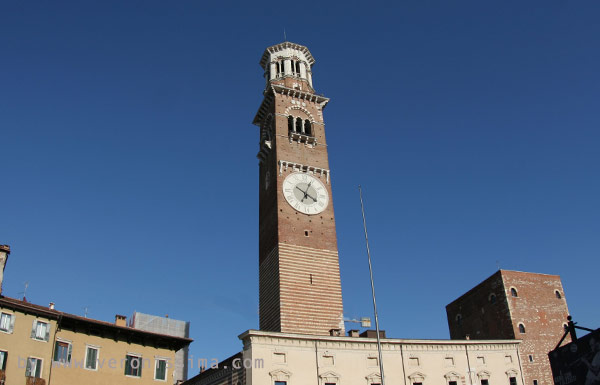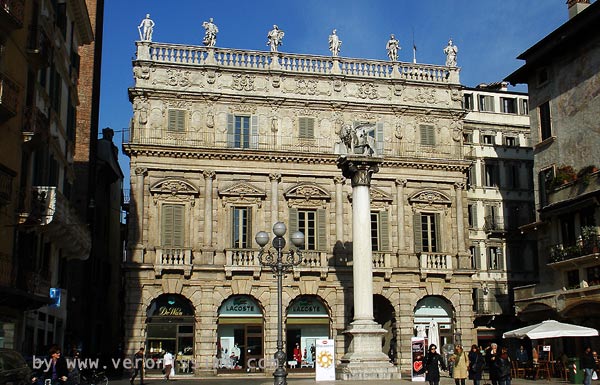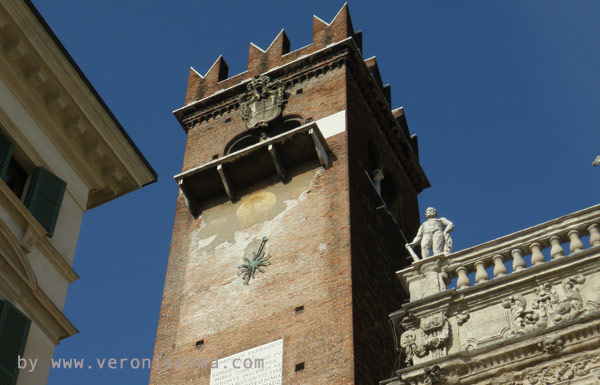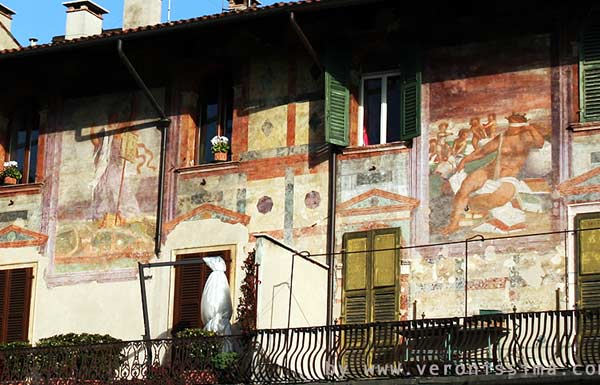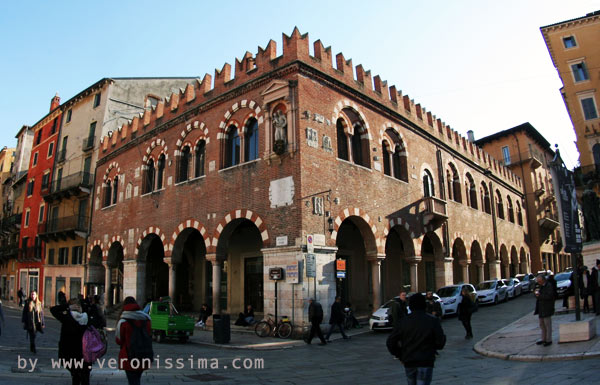Erbe Square
Piazza delle Erbe, literally Herbs Square is the ancient Roman forum of Verona. It has always been the exact center of the city, a meeting place for locals and visitors alike, where you can stop for an aperitif and chat with friends in an enchanting setting. All around, buildings and monuments of every age and style make it an unmissable stop on any guided tour of Verona.
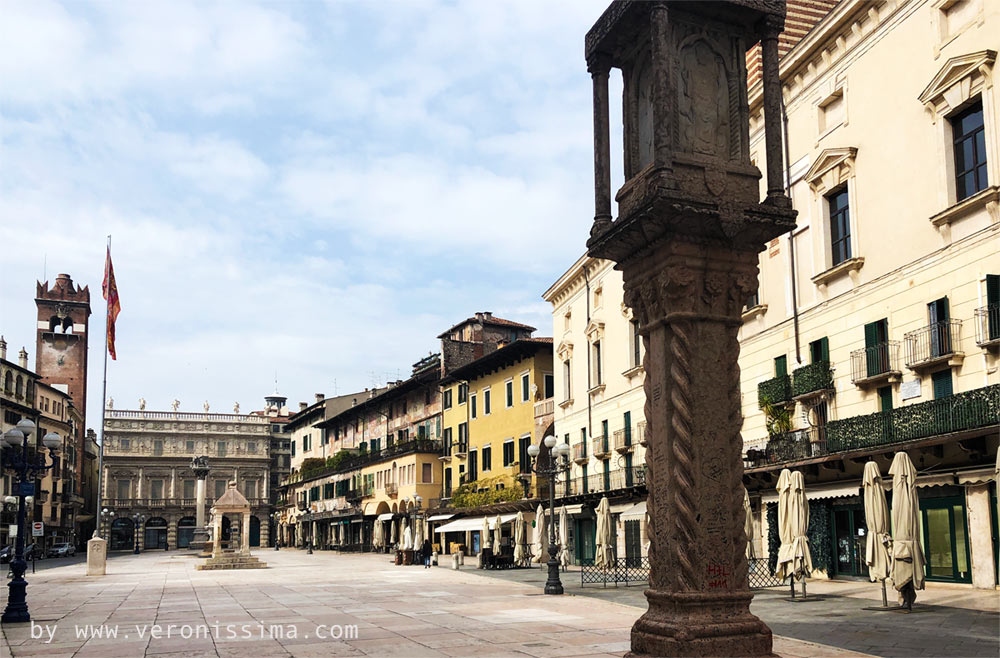
Info & Bookings:
+39 333 2199 645 info@veronissima.com P.I. 03616420232 C.F. CPPMHL74L13L781C
Roman Age and Underground Remains
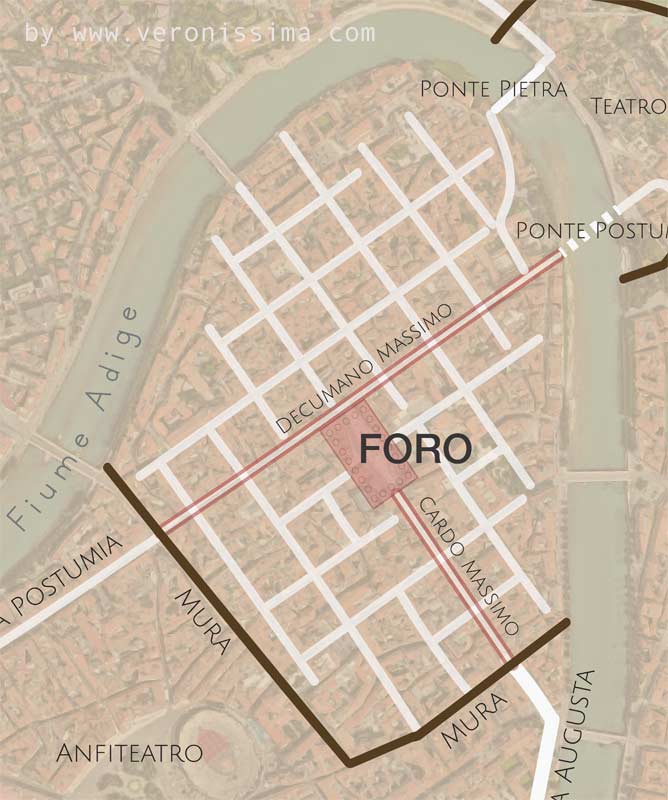
When the Romans arrived in Verona, they founded the city according to the typical urban scheme based on the military camp: a square plan surrounded by walls, parallel and perpendicular streets forming a regular grid. The two main avenues (cardo massimo and decumanus massimo) crossed each other in the center, giving life to the forum, the square that was the heart of the social, economic and religious life of every Roman city.
Two thousand years later the forum is still there: Piazza delle Erbe.
The Roman Forum
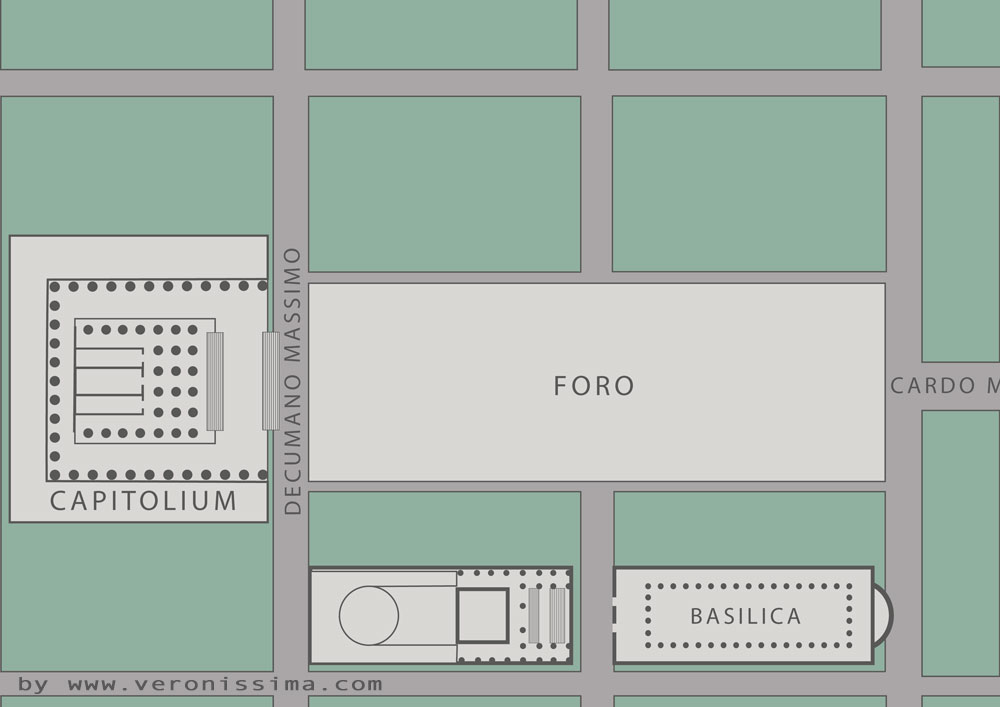
The Roman forum was rectangular in shape, and was twice the size of the present-day Piazza Erbe, which today has a rhomboidal shape. One long side was occupied by large public buildings: the curia and the basilica. One of the short sides was instead occupied by the large raised platform on which stood the capitolium, the main temple of the city, dedicated to Jupiter, Juno and Minerva.
On the remaining sides there was an arcade from which opened the tabernae, stores and places where to consume food and drink.
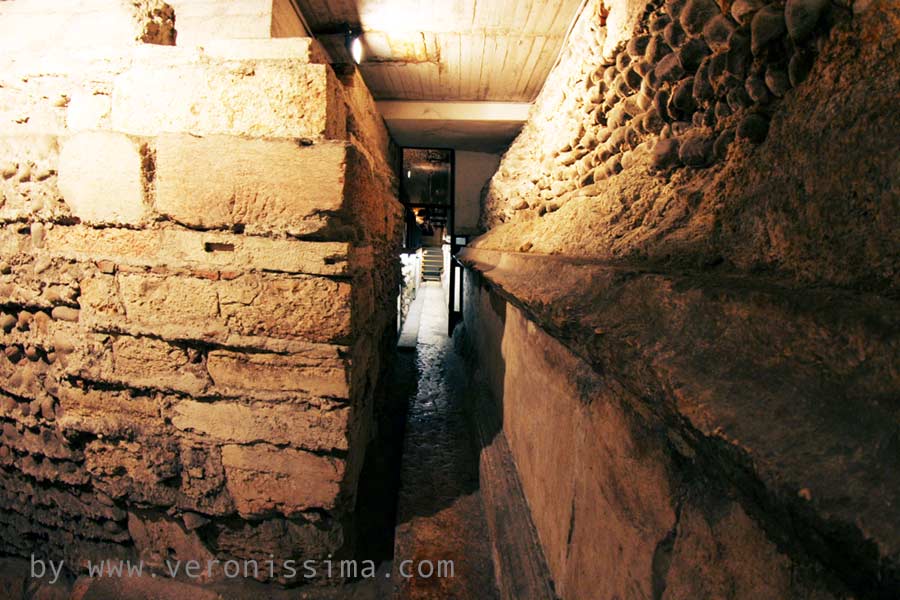
To see the remains of these ancient buildings and structures, however, you have to go down three metres below street level in Piazza Erbe.
In the cellars of a famous restaurant that overlooks the square, you can see the foundations and some of the columns of the ancient temple.
Underneath another prestigious restaurant overlooking the square are the remains of the curia, basilica, a Roman paved road and the basement of an early medieval tower.

Underneath one of the bars on the long side of Piazza Erbe, you can admire the original stone structure of the Roman forum with its drainage channel and numerous remains of columns from the portico.
If you want to know more
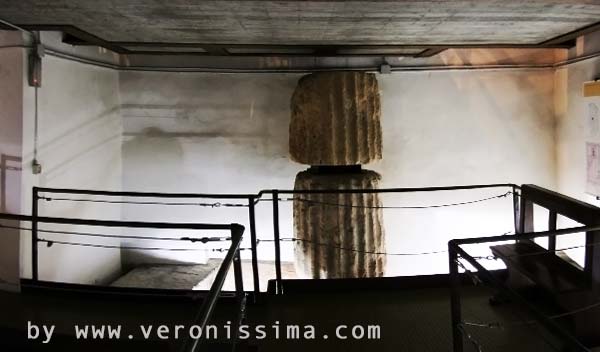
Verona Underground Tour
FIND OUTMadonna Verona Fountain
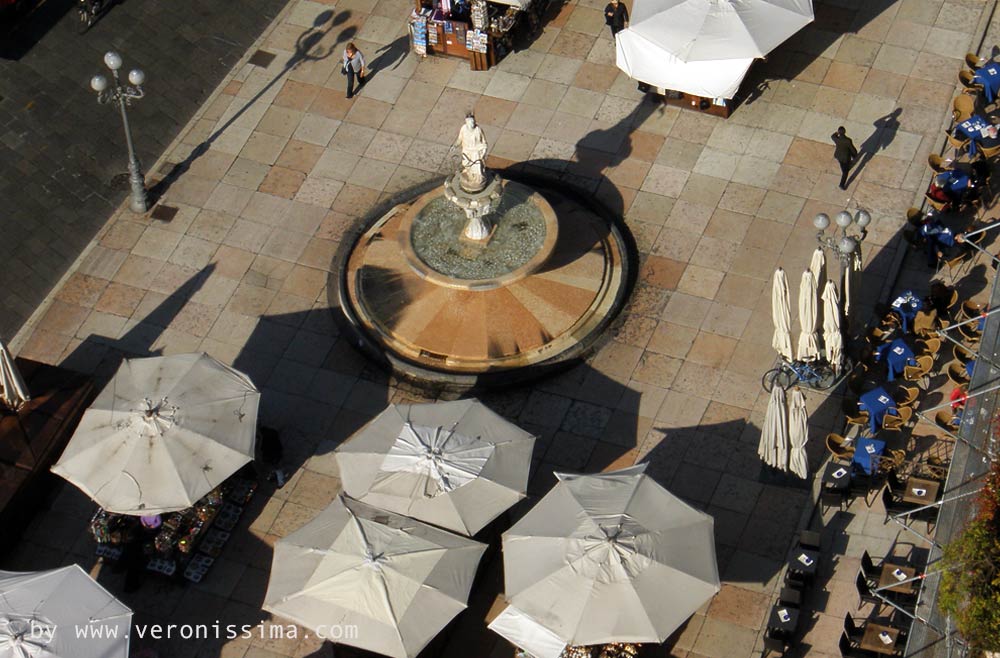
The exact center of the square is occupied by the fountain of Madonna Verona, created by Cansignorio della Scala, lord of Verona, at the end of the 1300s. The entire monument is an allegorical representation of the city, depicted as a beautiful princess with a Roman body and medieval head and arms. The sculpture is standing on a stem with effigies of the sovereigns, historical or legendary, of Verona. It was made by assembling various pieces of different origins including a Roman thermal bath.
La Berlina
A little further on, a kiosk on a podium attracts the curiosity of visitors. A dangling chain immediately brings to mind a place of torture. In reality, it is the podium on which the measurements once used in Verona for the various types of goods on sale in the market were marked. On a column are engraved the units of linear measurement. Carved on a step are the shapes of a brick and a tile. The ring at the end of the chain was used to measure the diameters of the bundles.
St. Mark Lion's Column
At one end of the square stands a large stone column. It is topped by the imposing sculpture of a leon of St. Mark placed during the four hundred years of Venetian rule of Verona, from 1405 to 1797. The statue was destroyed by the Jacobins during Napoleonic rule and was replaced by a replica in the aftermath of Italian unification.
The Jewish Ghetto
At the opposite end you are struck by a group of tall, narrow, huddled buildings. This is what remains of the old Jewish ghetto of Verona. It was established at the end of the 1400s. The Jews were confined to a certain area near the market. If a family expanded, there was no other option but to build high, creating these characteristic dwellings. The ghetto was opened with the arrival of Napoleon. In the center is the synagogue designed by architect Fagiuoli at the beginning of the 20th century.
The monument to the fallen of the Austrian bombardment
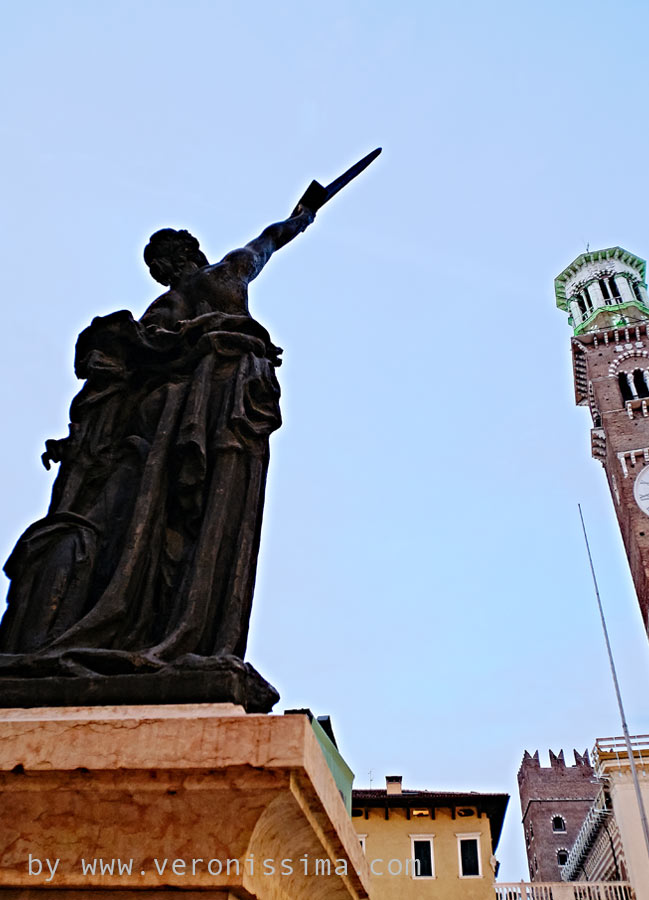
At the center of a small widening at the side of piazza Erbe a bronze statue attracts the curiosity of visitors. It depicts a woman holding a sword with her arm stretched towards the sky. The monument commemorates one of the first civilian bombings in history, which took place on 14 November 1915 during World War I. Austrian planes dropped bombs on Piazza Erbe during market hours, causing 29 deaths and numerous injuries.
The Rib Arch
On the opposite side, from an arch connecting the Palazzo della Ragione to the Domus Nova, hangs a mysterious object. It is a gigantic rib. Tradition indicates it as a whale bone, but someone advances the hypothesis that it could be an ichthyosaur fossil. Even on the reasons for its presence there are many hypotheses. The most likely is that it was an unusual object placed there by the apothecary who had his store just down there to attract curious customers.
Other Buildings and Monuments
The unique aspect of Piazza delle Erbe is given by the presence of several buildings and monuments of great visual impact.
.
The 84-metre-high Lamberti Tower is the tallest building in Verona. It is characterized by the various styles and materials with which it has been built several times over the centuries.
The short side of the square, where the Capitolium stood in Roman times, is entirely occupied by palazzo Maffei, a magnificent Baroque building surmounted by statues of Roman gods. It is now home to the extraordinary museum that exhibits the works of the Carlon Foundation.
Next to Palazzo Maffei, the Torre del Gardello is one of Verona's many Scaliger works. It once housed one of the oldest public clocks in Italy.
One of the long sides of the square is characterized by the facades entirely decorated with the flamboyant frescoes of the Case Mazzanti.
On the opposite side is the Domus Mercatorum, a low crenellated brick building surrounded by a wide portico. It was the seat of the medieval arts guilds.
The Market
Verona's ancient forum has always been a place of commercial exchange. In the Middle Ages, the main merchandise sold here was spices and vegetables. Hence the current name of Piazza delle Erbe. In recent decades, the spread of large supermarkets and the growth of tourism in Verona have changed the appearance of the stalls in Piazza Erbe. Today there are only two or three stalls that still sell fruit and vegetables, surrounded by souvenirs of all kinds.
Barbarani and Dall'Oca Bianca
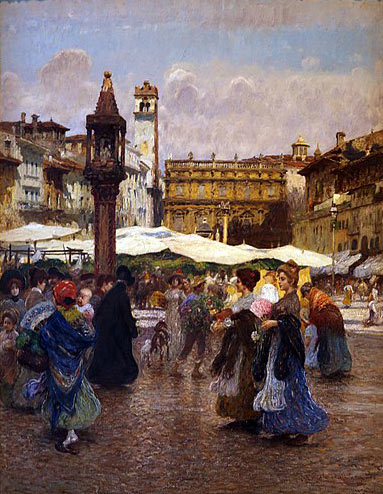
Piazza delle Erbe has always been the heart of the city of Verona, and has been a source of inspiration for artists and poets. In particular, the poet Berto Barbarani and the painter Angelo Dall'Oca Bianca, at the turn of the 19th and 20th centuries, immortalized in their works the square, the characters, the stories and the world that revolved around it in a period of great transformation.
At one end of the square, a bronze statue of Berto Barbarani gazing at the market and the Lamberti tower is the city's tribute to its most passionate storyteller.
The Aperitivo
Piazza Erbe has always been the place where the Veronese meet up with friends and sit down for an aperitif. One long side of the square is entirely occupied by bars with their stalls where you can sit and enjoy the classic spritz, a Prosecco or a glass of Durello metodo classico in the magnificent setting of one of the most beautiful squares in Italy. During the weekends of the summer season the square and the premises that overlook it.
Further information on piazza Erbe and guided tours of Verona:
+39 333 2199 645 info@veronissima.com P.I. 03616420232 C.F. CPPMHL74L13L781C

 IT
IT 日本
日本 DE
DE FR
FR 中文
中文 ES
ES